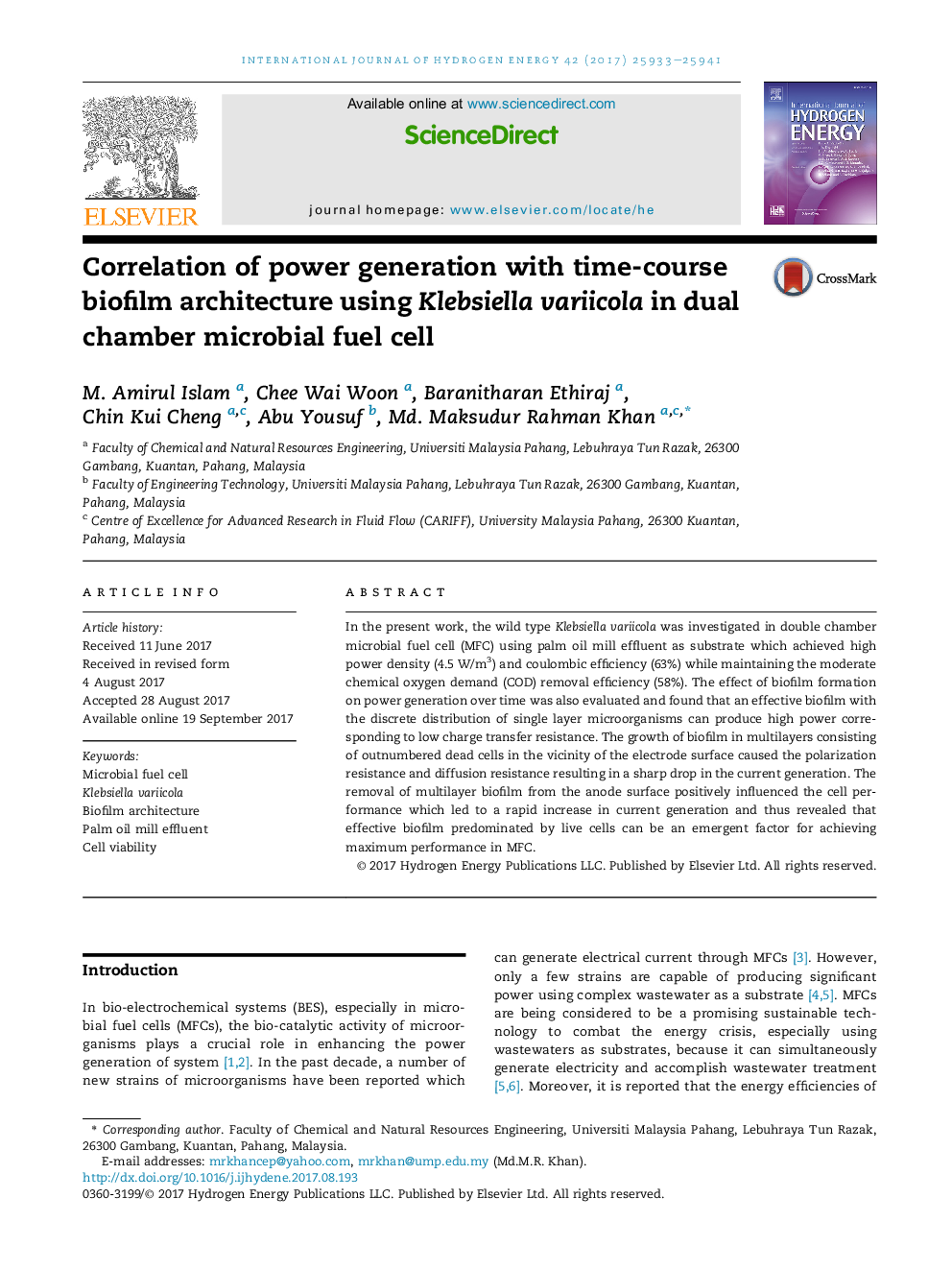| Article ID | Journal | Published Year | Pages | File Type |
|---|---|---|---|---|
| 5145156 | International Journal of Hydrogen Energy | 2017 | 9 Pages |
Abstract
In the present work, the wild type Klebsiella variicola was investigated in double chamber microbial fuel cell (MFC) using palm oil mill effluent as substrate which achieved high power density (4.5Â W/m3) and coulombic efficiency (63%) while maintaining the moderate chemical oxygen demand (COD) removal efficiency (58%). The effect of biofilm formation on power generation over time was also evaluated and found that an effective biofilm with the discrete distribution of single layer microorganisms can produce high power corresponding to low charge transfer resistance. The growth of biofilm in multilayers consisting of outnumbered dead cells in the vicinity of the electrode surface caused the polarization resistance and diffusion resistance resulting in a sharp drop in the current generation. The removal of multilayer biofilm from the anode surface positively influenced the cell performance which led to a rapid increase in current generation and thus revealed that effective biofilm predominated by live cells can be an emergent factor for achieving maximum performance in MFC.
Keywords
Related Topics
Physical Sciences and Engineering
Chemistry
Electrochemistry
Authors
M. Amirul Islam, Chee Wai Woon, Baranitharan Ethiraj, Chin Kui Cheng, Abu Yousuf, Md. Maksudur Rahman Khan,
